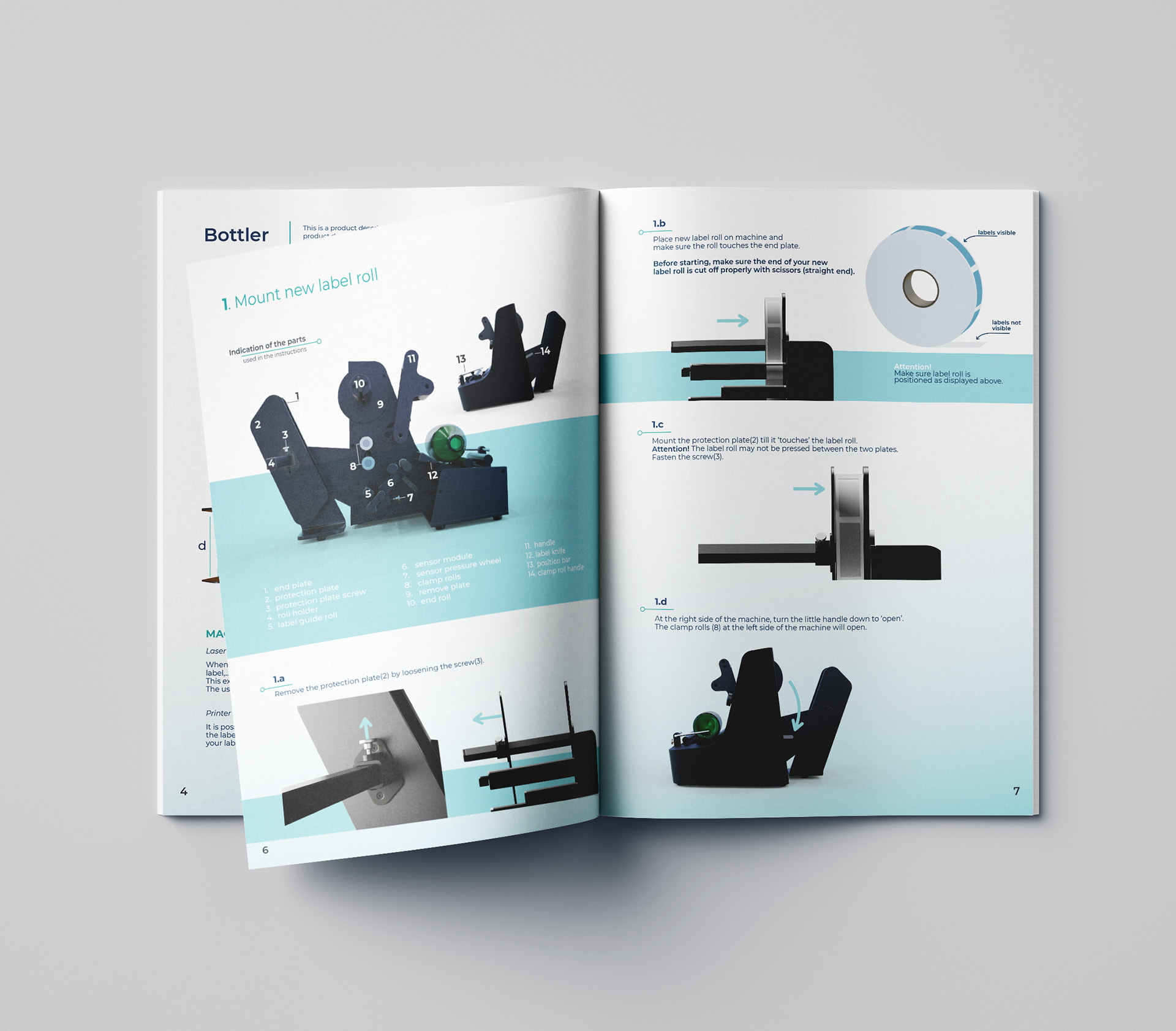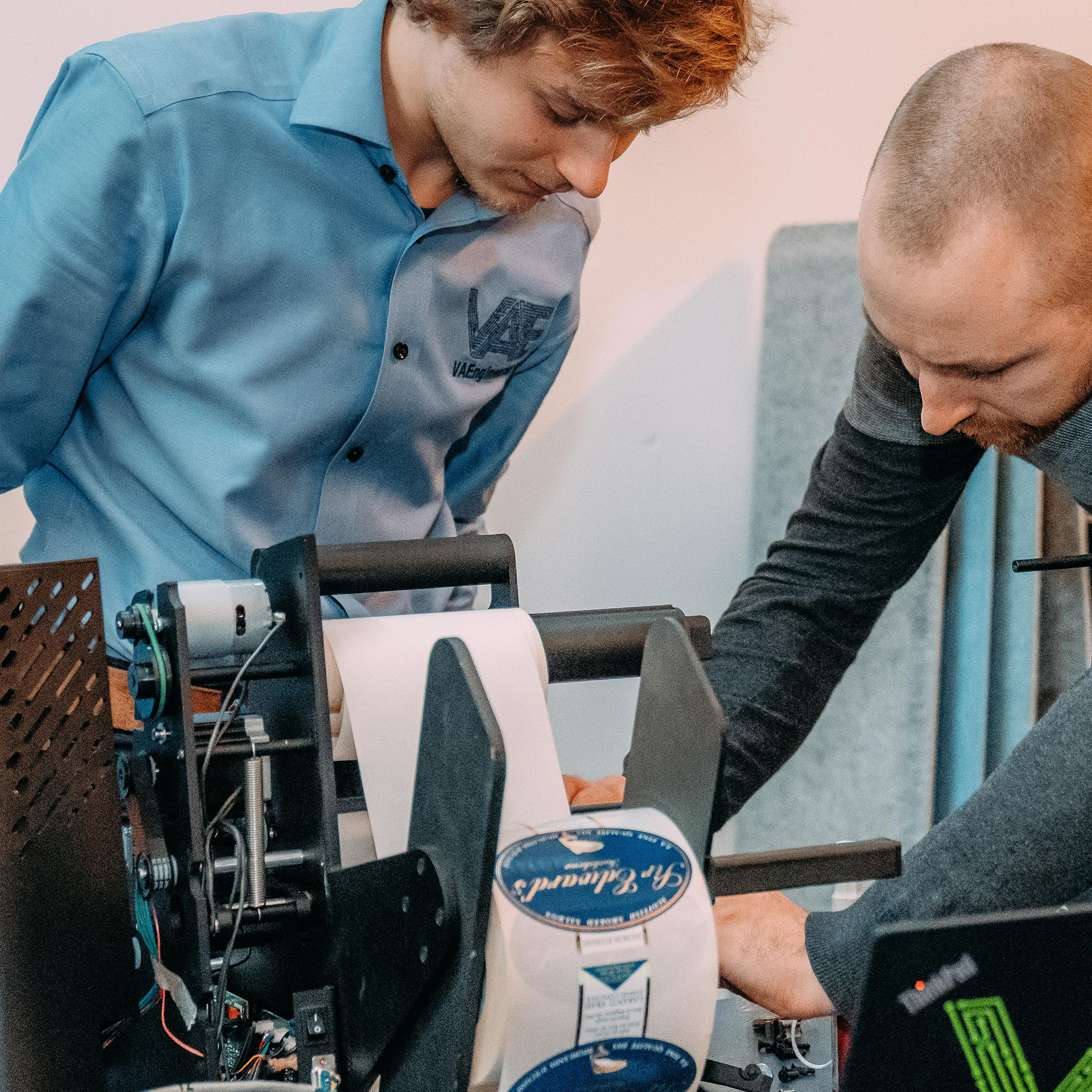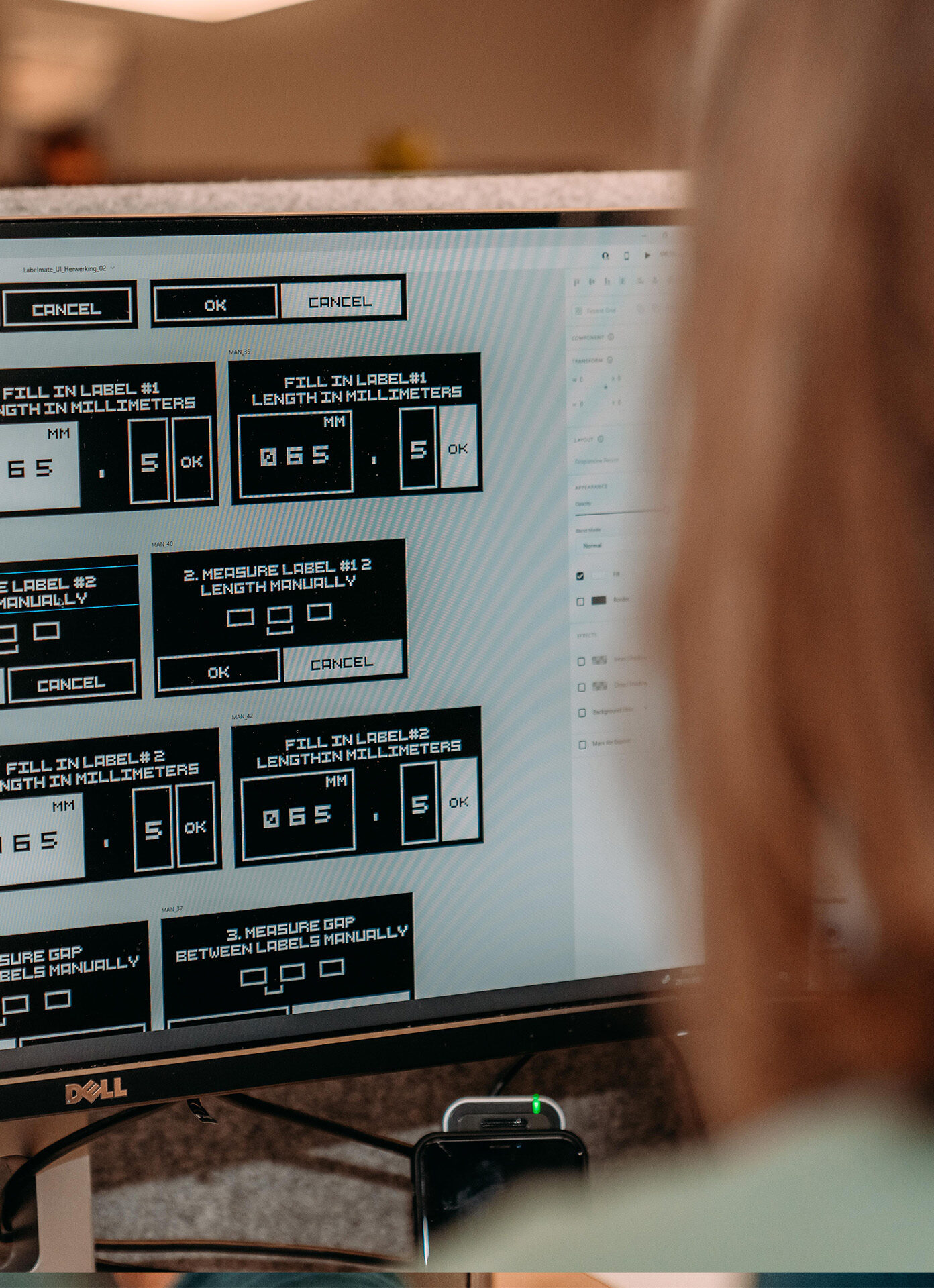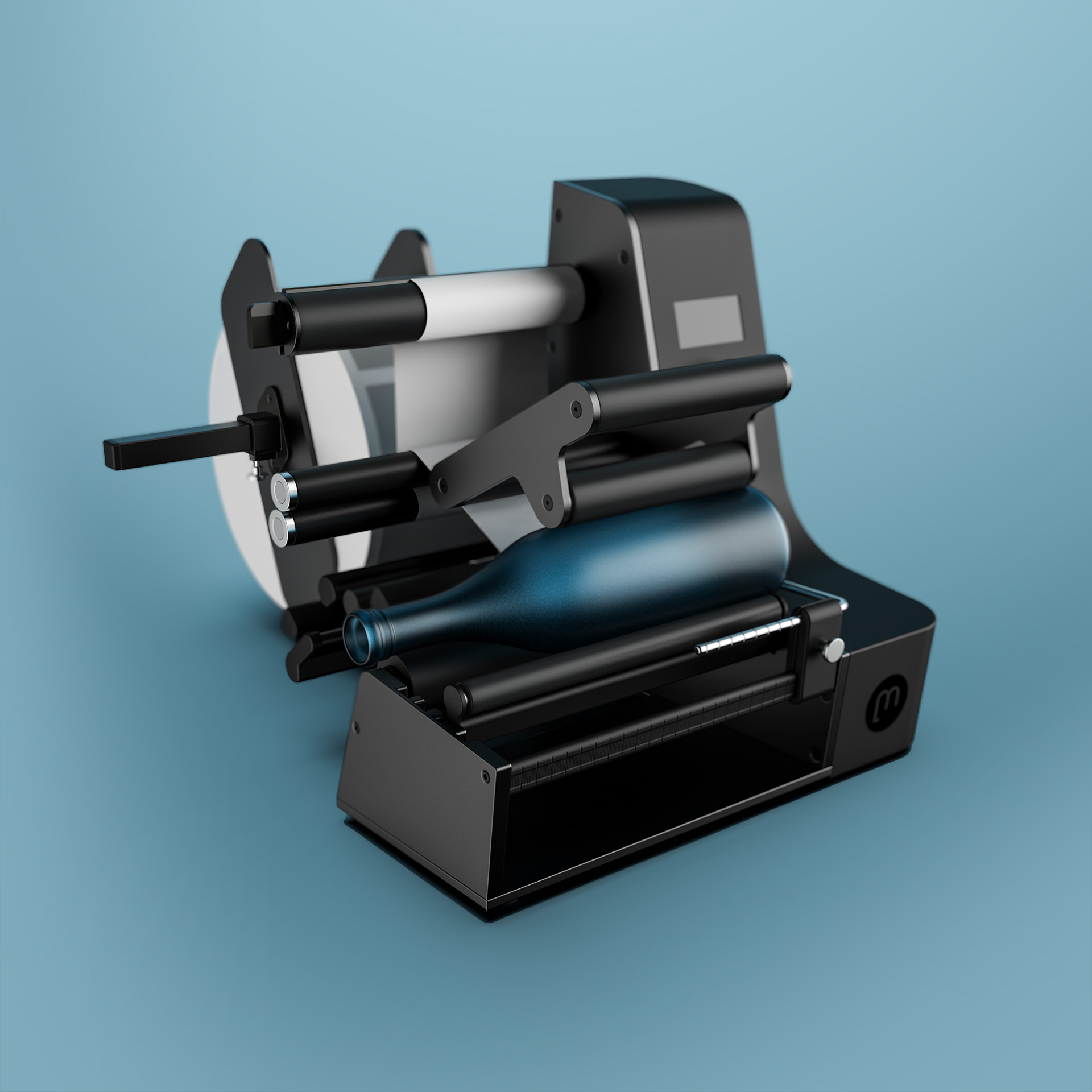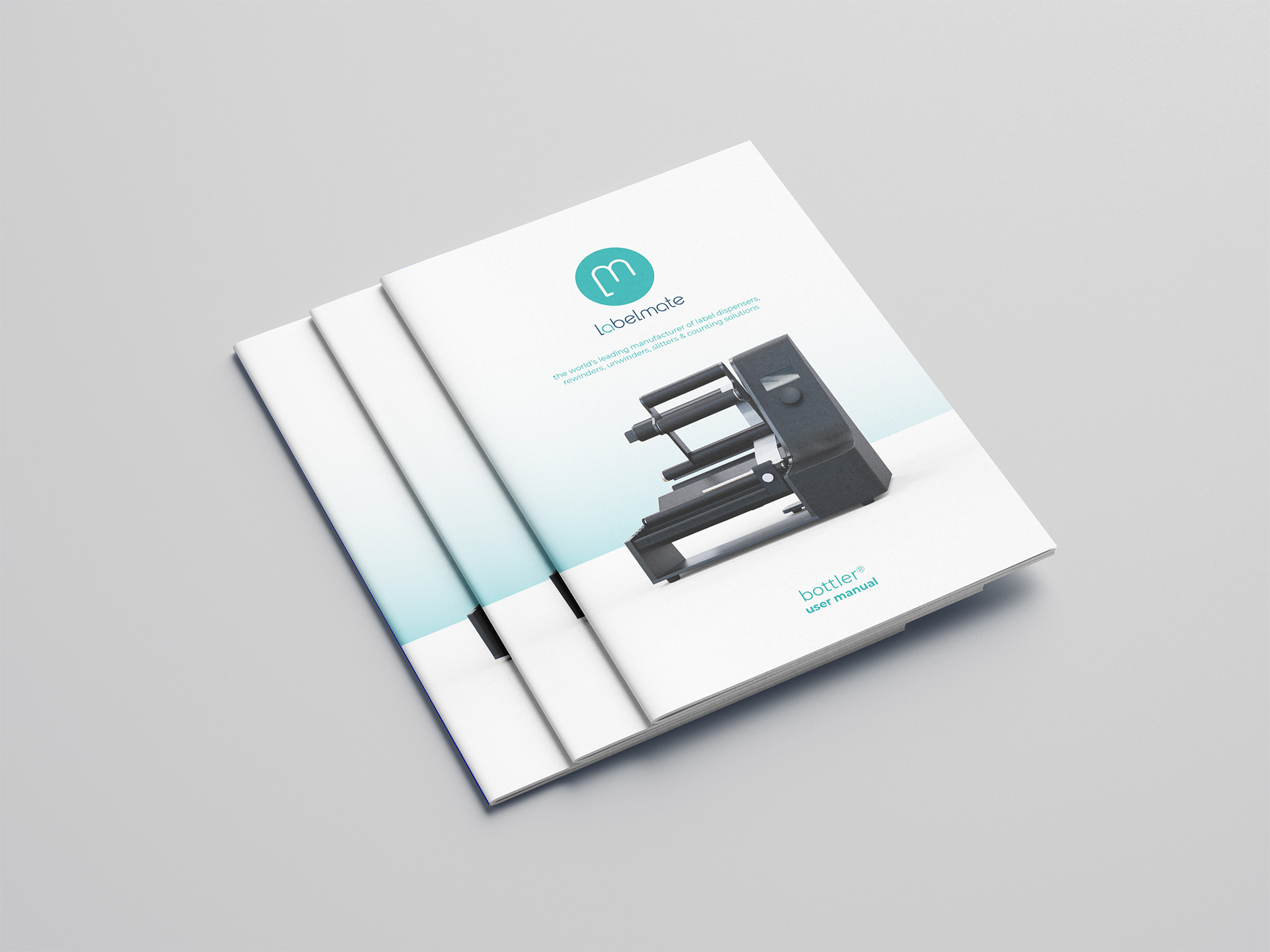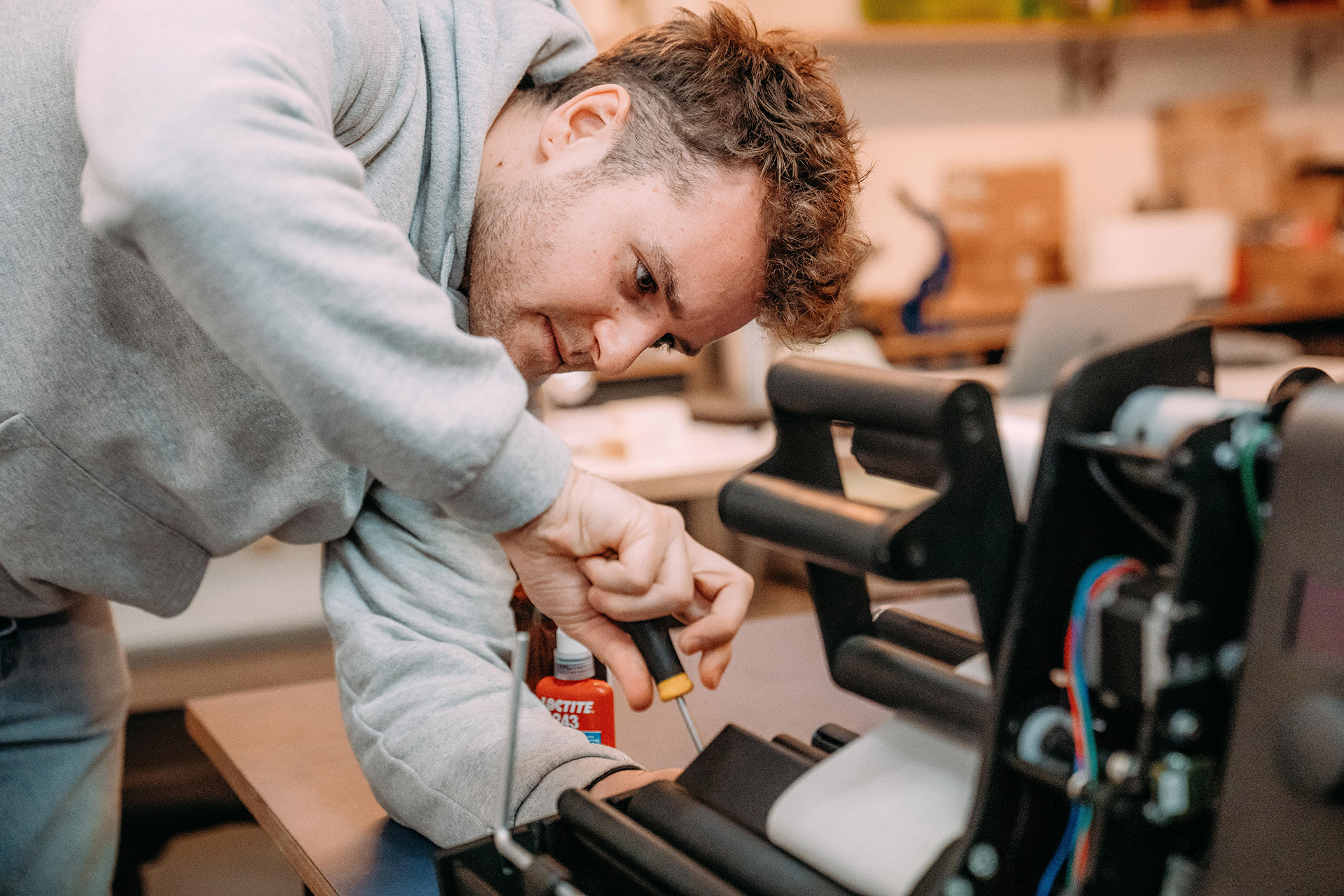- CASES
- Labelmate
- Industrial
Mechanical engineering from market analysis to packaging
A connected bottle-labeling machine with increased ease of use, top UI design and electro-mechanics that allows personalization of anything from a lipstick to a wine bottle. That was the demand.
Our answer: an ingenious device that is the result of a thorough collaboration and search for improvements where usability is key.
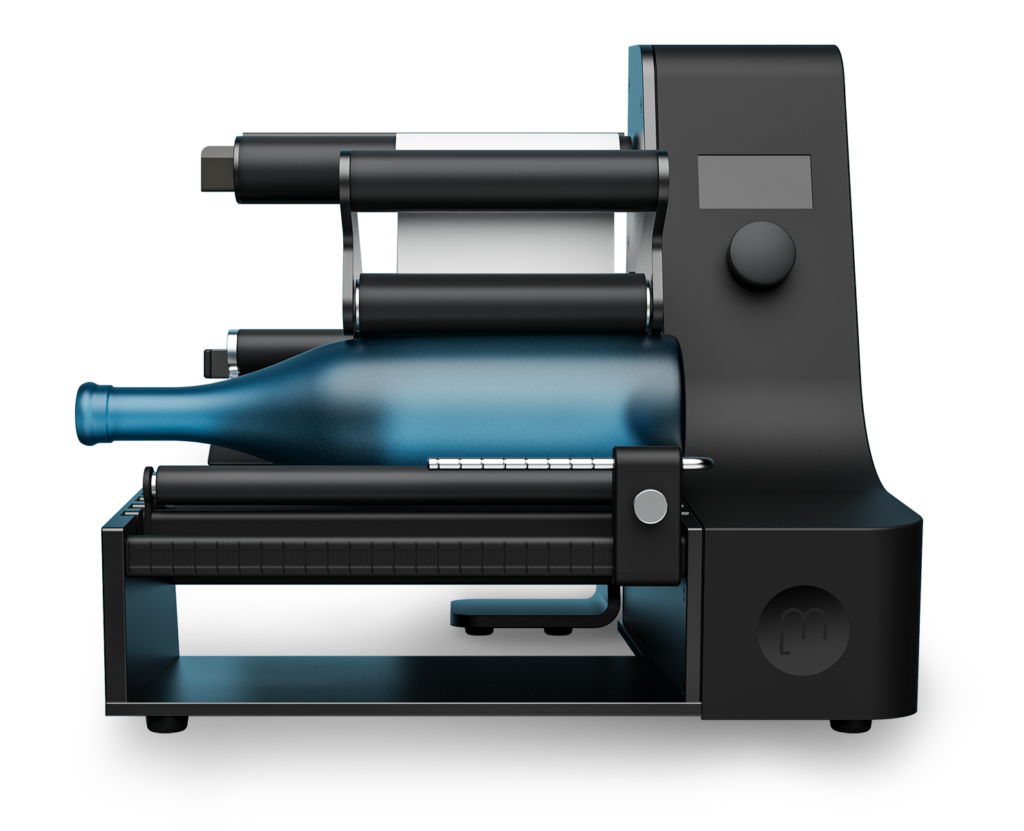
Message in a bottle.
Microbreweries are mushrooming and so is the demand for personalized labels. However, this demand is not limited to the beverage sector. Many smaller producers with limited print runs can use LABELMATE to upgrade their product range in their own house style, without disproportionate investment or complex technical knowledge.
The message was immediately clear.... efficient cost of production, foolproof ease of use & wide field of application.
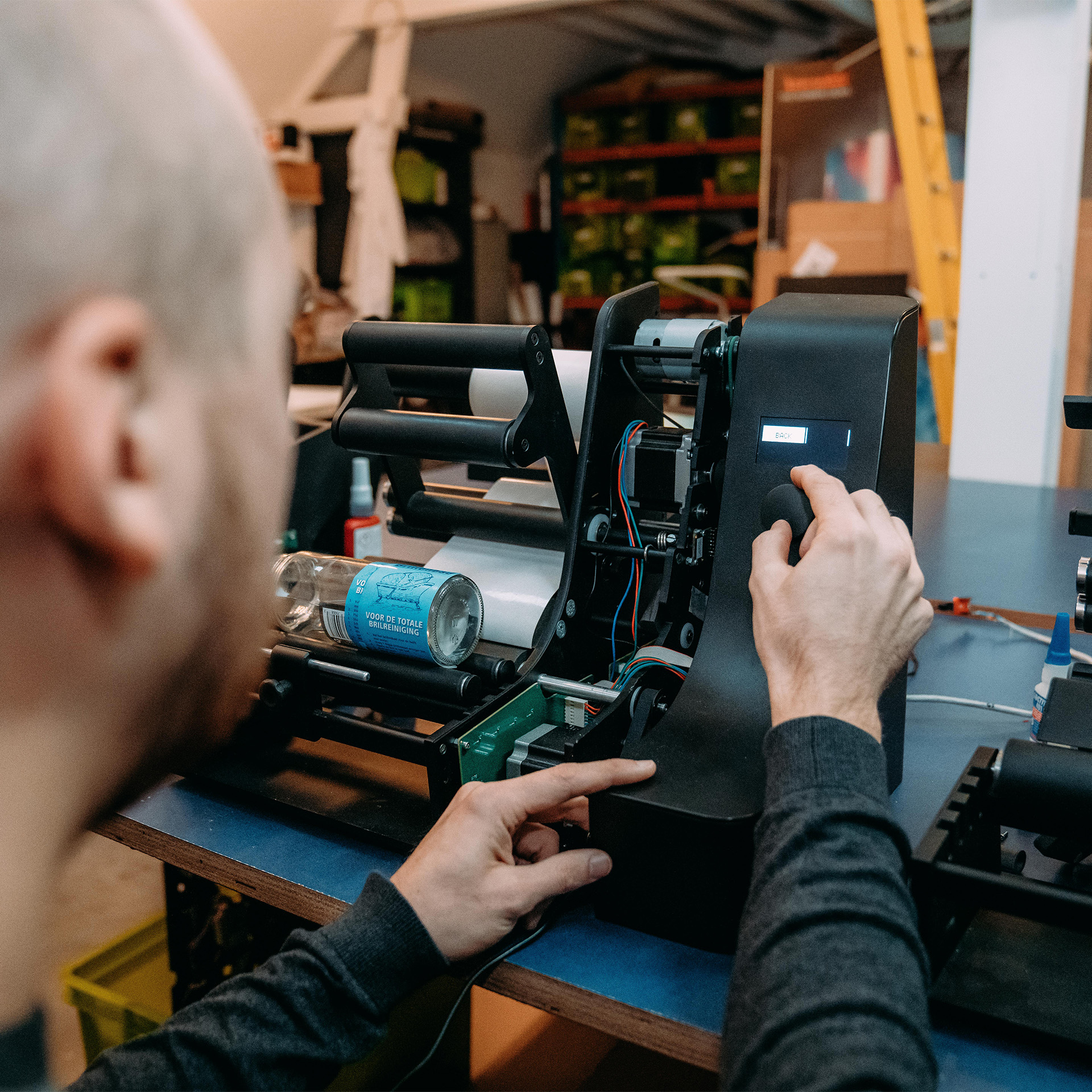
Ready.. set.. go.
All shapes and sizes
Over the last five years, we have seen the combination of mechanics and electronics more and more thanks to the rise of commercial mechanical engineering. A logical evolution perhaps, but one with challenges all its own - think better UX, tighter pricing and the option to use such a machine beyond the exact environment it was designed for. That hat trick, we wanted to score with LABELMATE.
So we expanded the features to include more types of labels and a wider range of products. That required a sensor that could read all the variations correctly and a machine that could apply all the variations. What that also required was a lot of thinking. Totally our thing to find the right sensor, pinpoint the exact location of that sensor, and add a rotation detection. 2 iterations and a few ingenious interventions later, here it is.
Push the button.
"Just one button for an entire machine" I hear you thinking....
But behind that central control is a pared-down interface. One that, like the hardware, has been extensively tested and takes the end user through the process from start to finish. When operation is described by end users as "simply simple," we know we've done our job.
What label do you put on the packaging of a labeling machine?
Such a machine must, of course, sell and survive transportation. We were happy to help think about the marketing material for LABELMATE.
A tot Z, right?
